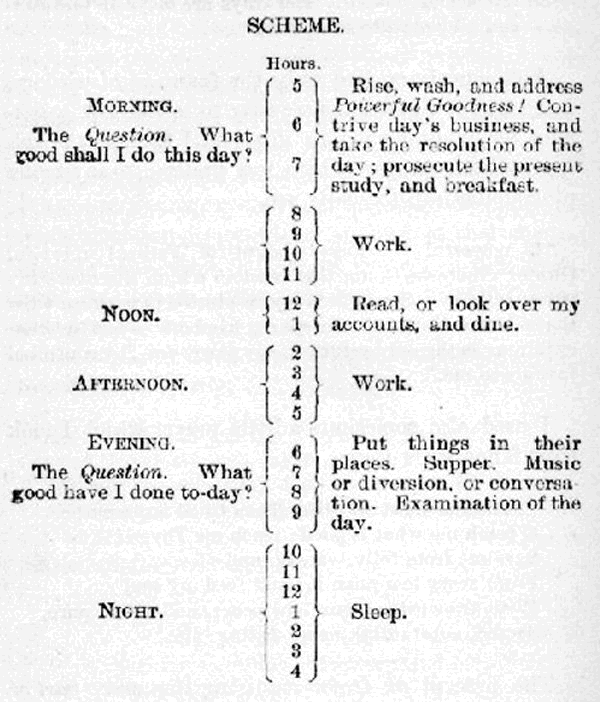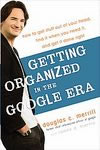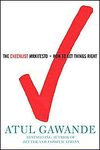
If you are into personal finance, you have to respect Ben Franklin. Amongst many other things, he started a successful business and “retired” at 42, after which he devoted his time to science and later statesmanship. He wrote and published the Poor Richard’s Alamanac for over 25 years, probably the first version of a widely read “frugal blog”. Don’t miss reading this illustrated post by Maira Kalman.
Above is a peek into his daily schedule, originally from the Autobiography of Benjamin Franklin, which by the way is available for free in the public domain. Don’t miss the questions on the left part. Seven hours of sleep, not too bad. 🙂 Found via The Big Picture.
 While procrastinating today, I of course ran across a couple of tips on productivity and success that both powerful and very different.
While procrastinating today, I of course ran across a couple of tips on productivity and success that both powerful and very different. I ran across
I ran across  The NY Times has a new series called the
The NY Times has a new series called the 
 The Best Credit Card Bonus Offers – 2025
The Best Credit Card Bonus Offers – 2025 Big List of Free Stocks from Brokerage Apps
Big List of Free Stocks from Brokerage Apps Best Interest Rates on Cash - 2025
Best Interest Rates on Cash - 2025 Free Credit Scores x 3 + Free Credit Monitoring
Free Credit Scores x 3 + Free Credit Monitoring Best No Fee 0% APR Balance Transfer Offers
Best No Fee 0% APR Balance Transfer Offers Little-Known Cellular Data Plans That Can Save Big Money
Little-Known Cellular Data Plans That Can Save Big Money How To Haggle Your Cable or Direct TV Bill
How To Haggle Your Cable or Direct TV Bill Big List of Free Consumer Data Reports (Credit, Rent, Work)
Big List of Free Consumer Data Reports (Credit, Rent, Work)